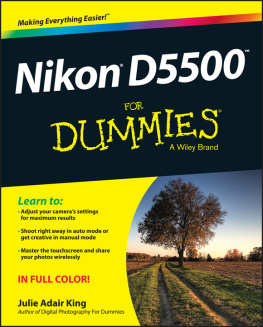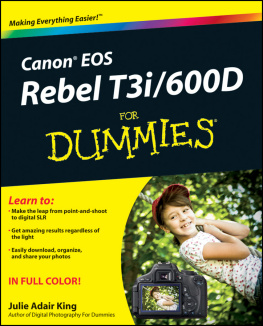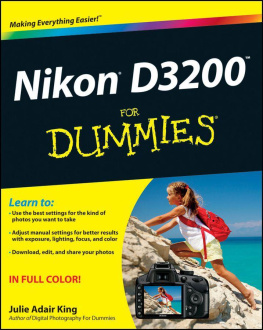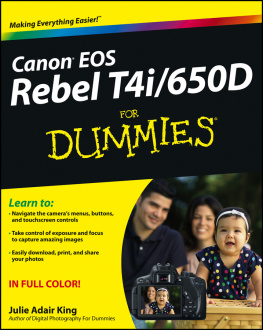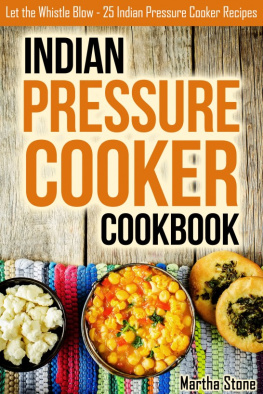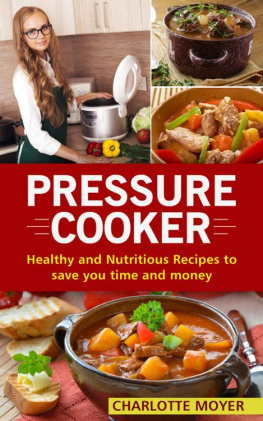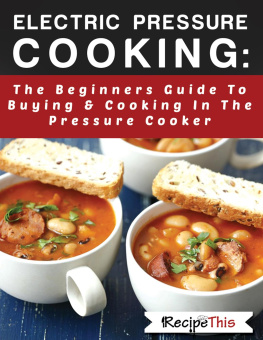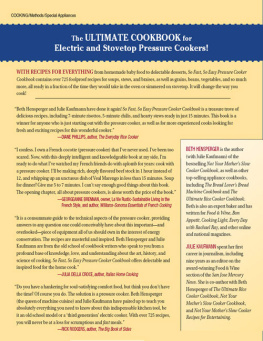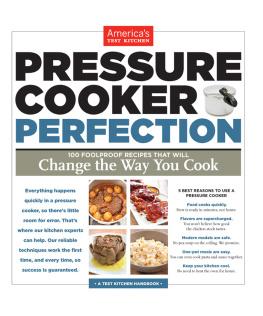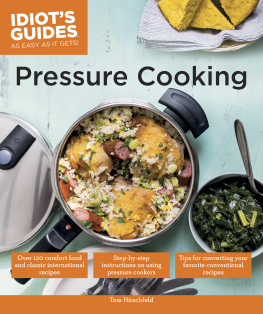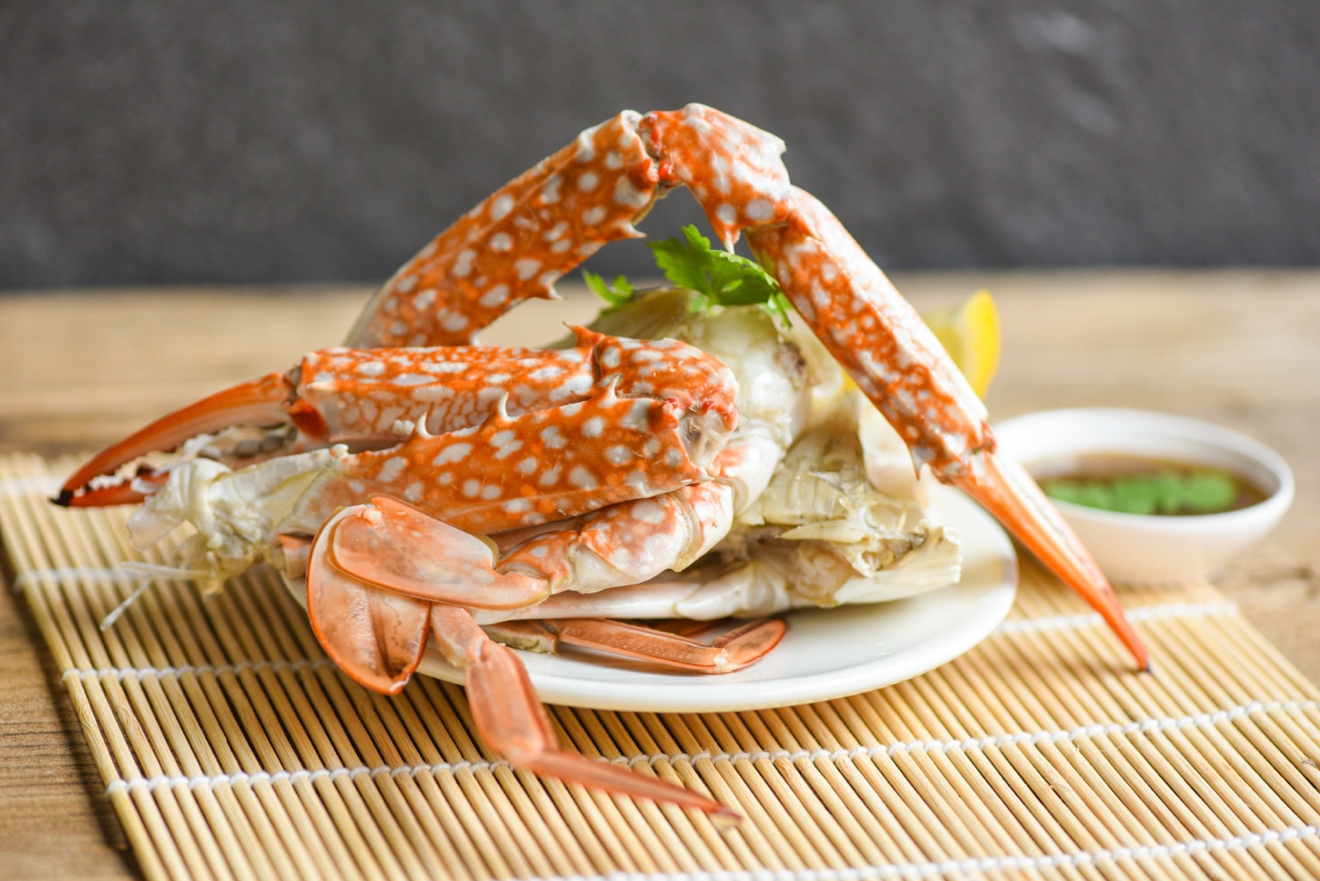The Ultimate Pressure Cooker Cookbook
Incredible Recipes You Can Easily Cook with Your Pressure Cooker
By: Logan King
Copyright 2021 by Logan King
Edition Notice
The author has taken any step to make sure this book is accurate and safe. Every info is checked. However, every step you take following the book do it with caution and on your own accord.
If you end up with a copied and illegal version of this book please delete it and get the original. This will support the author to create even better books for everyone. Also, if possible report where you have found the illegal version.
This book is under copyright license which means no one is allowed to make any changes, prints, copies, republish or sell it except for the author.
Gifts for Everyone
I love giving gifts, especially because I can feel how people are grateful for them. The best part about cookbooks is that its the most practical gift anyone can receive. Thats why my subscription chance will keep you up to date with my latest books as well as discounts.
In addition, there are times when I share free books that I am sure that you dont want to miss out on. No matter how many recipes we have, they always seem not enough, so get as much as possible.
https://logan.subscribemenow.com
Table of Contents
Introduction
The pressure cooker is a modern-day kitchen gadget that has been around for decades. The pressure cooker, more specifically the instantaneous pot, has many benefits and uses. They can make eggs in as little as three minutes, and you can cook rice in as few as six minutes.
It is extraordinarily convenient for most people. Some of the benefits include short cooking times, quick pressure release that helps prevent overcooking, and less monitoring because there is very little evaporation. Pressure cookers also help food retain more nutrients than traditional cooking methods.
Pressure cooking is cooking food by heating it to high pressure and rapidly reducing it to atmospheric pressure. A variety of foods can be made quicker and with less energy required than if they were cooked the normal way.
Pressure cooking exploits the fact that higher pressures can be achieved at lower temperatures than under normal conditions: this allows higher-temperature cooking at slower speeds where good results may not be possible otherwise. For example, browning meat in a deep-fat fryer can take many hours, but such a device rapidly accelerates this process as the pressure cooker.
The key to this process is the "bomb," the airtight cooking vessel that traps steam in the vessel with the food. The boiling point of water at sea level is 100 degrees Celsius (212 degrees Fahrenheit). A pressure cooker uses a rubber gasket forcing water under pressure into the cooking pot, causing its temperature to rise until it is sufficiently high for this process to occur. Pressure cookers are not designed to hold their maximum pressure indefinitely; they must be allowed to cool after use to release internal pressures gradually. Its chamber can be made from steel, aluminum, anodized aluminum, kitchen-grade aluminum alloy, copper, or brass. These materials are suitable for high-temperature processes.
Pressure cookers come in three sizes: small, large, and extra-large. Some manufacturers also make a mini-cooker or a midsize cooker. The cooking time of beans and other vegetarian dishes will vary according to the pressure cooker used because not all pressure cookers have the same space inside the cooking pot. Cooking time should be reduced by approximately 20% for every 1000 feet above sea level that your kitchen is located as atmospheric pressure decreases with altitude.
Pressure cookers were first used in France around the 1850s by chefs experimenting with closed vessels to make reductions quickly. Their invention is attributed to Franois Appert, a confectioner from Paris who would sell his creations knowing that they would not spoil before reaching their destination. In 1809, he started canning food of all types using a sealed container and heating the jars to create a vacuum that enabled him to transport food safely without spoiling. One version of his invention uses a kettle with an airtight lid and an airtight stove-top pressure cooker, where steam and pressure cook the contents and then cool for serving. This is basically how modern pressure cookers operate today.
Beef and Pork Recipes
1. Beef Cooked in Mango-Turmeric Spice
The beef Cooked in Mango-Turmeric Spice recipe is a delicious way to prepare beef that's tender, juicy, and packed with flavor. It's perfect for serving over rice or noodles too!
Preparation Time : 4 minutes
Cooking Time : 50 minutes
Servings : 2
Ingredients :
1-pound beef shin, cut into chunks
teaspoon ground cinnamon
teaspoon ground cloves
1 teaspoon dried mango powder
1 teaspoon ground turmeric
3 cloves of garlic, minced
1 tablespoon lemon juice
1 teaspoon honey
12 cardamom pods, bashed
Salt and pepper as needed
teaspoon ground cumin
2 tablespoons ghee
1 cup onions, cut into wedges
2 green chilies, sliced
2 tomatoes, chopped
1 cup water
Directions:
In a mixing bowl, combine the first 11 ingredients and marinate in the fridge for at least 2 hours.
Press the saut button on the Pressure Cooker and add the ghee. Stir in the marinated beef and sear button on all sides for at least 5 minutes.
Stir in the rest of the ingredients.
Install pressure lid. Close Pressure Cooker, press the pressure button, choose high settings, and set time to 45 minutes.
Once done cooking, do a quick release.
Serve and enjoy.
2. Perfect Sichuan Pork Soup
The perfect Sichuan Pork Soup recipe is a mouth-watering soup with an aromatic broth, mouth-numbing spice, and crackling meat.
Preparation Time: 10 minutes
Cooking Time: 20 minutes
Servings: 6
Ingredients:



